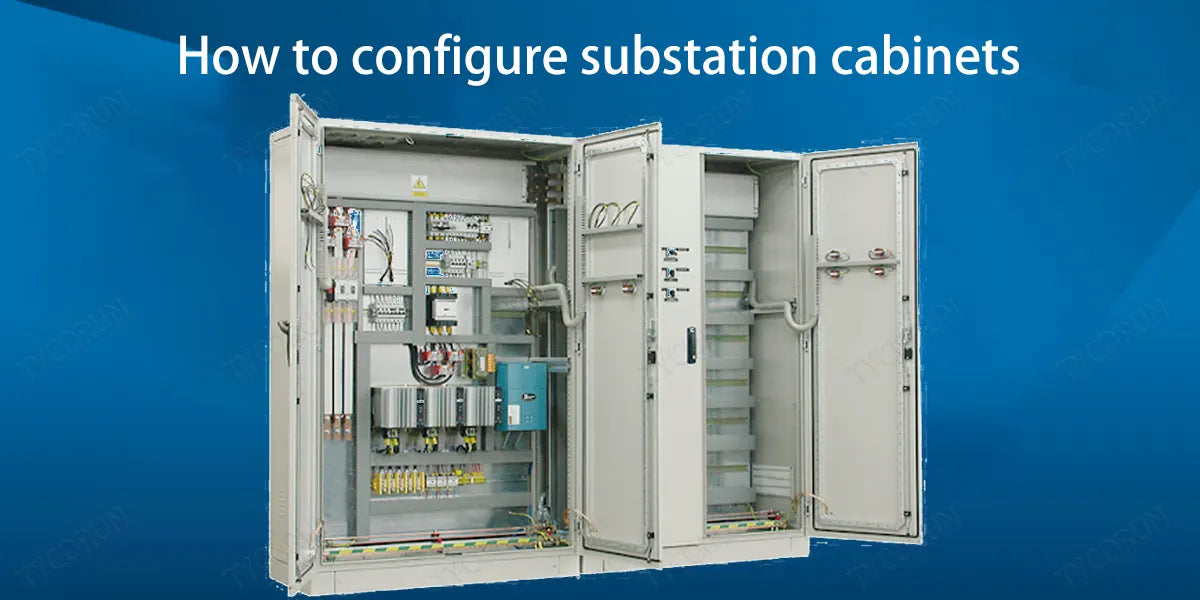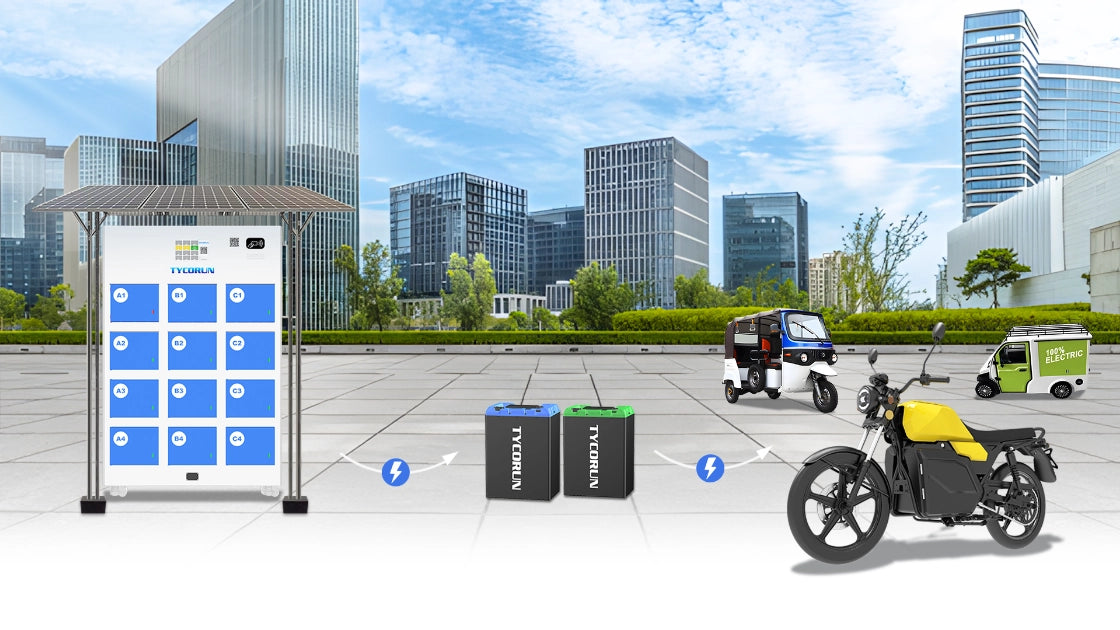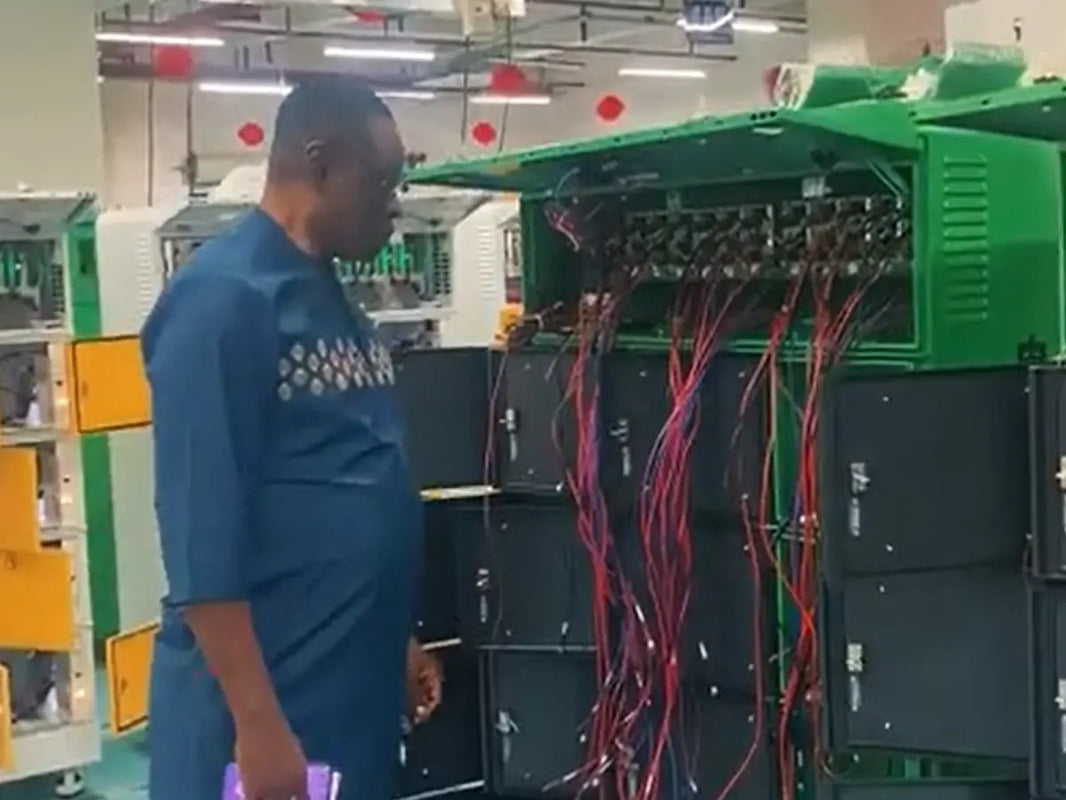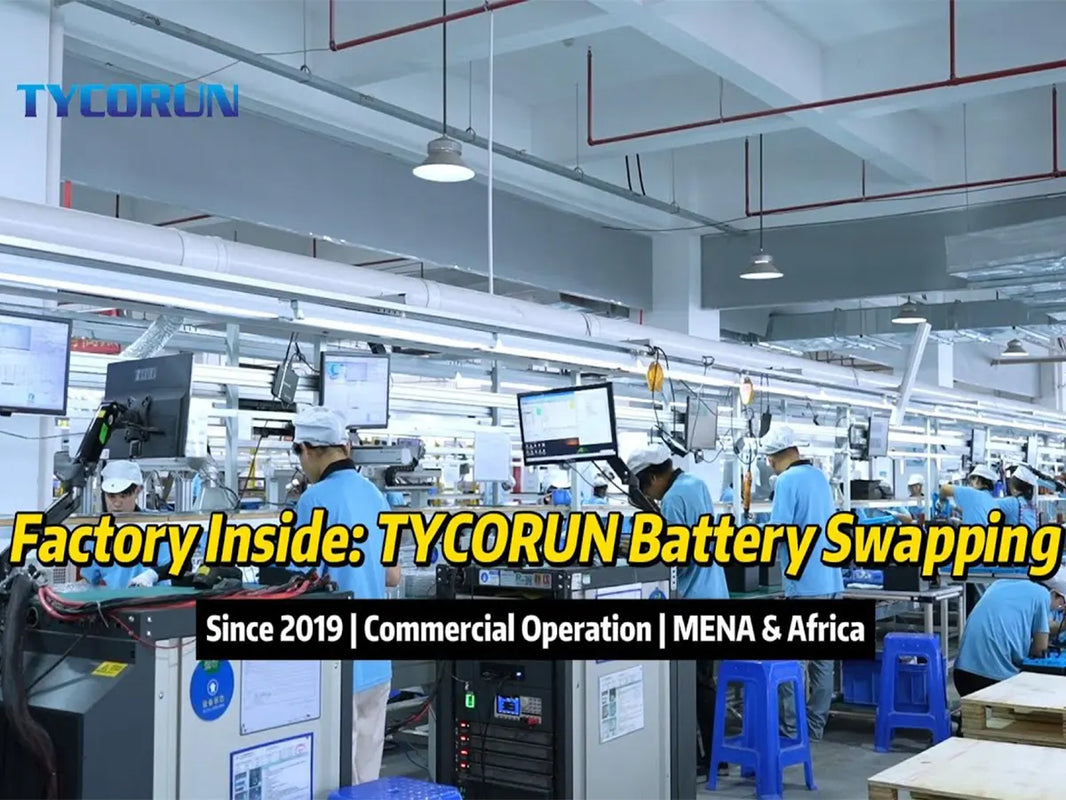
As a new type of substation that has emerged after civil engineering substations, substation cabinets are suitable for home solar power system in residential areas, urban public substations, bustling downtowns, and construction power supplies, etc. If you want to learn more about substation cabinets and how to use it properly, today we will give you an overall introduction for your reference.
Main content:
- What is substation cabinet
- Application scenarios of substation cabinets
- How to configure substation cabinets
- Precautions for outdoor installation of substation cabinets
- Troubleshooting of common electrical faults in substation cabinets
- Troubleshooting of substation cabinet tripping
- Precautions for fire and explosion-proof operation of substation cabinets
1. What is substation cabinet
Substation cabinet is a kind of high-voltage switchgear, distribution converter and low-voltage distribution device. It is a factory-prefabricated indoor and outdoor compact power distribution equipment arranged according to a certain wiring plan.
It includes high-voltage power receiving, converter step-down, and low-voltage distribution equipment. Electricity and other functions are organically combined and installed in a moisture-proof, rust-proof, dust-proof, rodent-proof, fire-proof, anti-theft, heat-insulated, fully enclosed, movable steel structure box, fully enclosed operation, especially suitable for urban network construction.
Substation cabinet is suitable for mines, factories, enterprises, oil and gas fields and wind power stations. It replaces the original civil distribution rooms and distribution stations and becomes a new complete set of power transformation and distribution devices.

2. Application scenarios of substation cabinets
① Used as street light substation cabinet: Whether it is a European-style substation cabinet or an American-style substation cabinet, it has advantages over traditional civil-construction power houses in small-load power systems. The cost of substation cabinets is much lower than that of ordinary electric rooms.
② Power supply for parks and communities: Substation cabinets are often used for power supply in parks and communities. Parks and communities often pursue aesthetics and occupy space. Substation cabinets solve these two problems very well, and occupies only a small area.
③ Industrial and mining power supply: Areas such as factories and mines have high requirements for power supply equipment due to complex terrain and expensive time costs. The substation cabinets are easy to install, require less on-site construction, and have a protection level of IP33, which can greatly reduce the construction volume and construction period and can be installed in areas with complex terrain.
④ Temporary power supply: Construction units often change the location of power consumption as the construction site moves, so a set of movable power distribution equipment is needed. Substation cabinets have good mobility and large enough load capacity to fully meet the needs of temporary power requirements in the construction site, serving as an off grid batteries system.

3. How to configure substation cabinets
The low-voltage main distribution cabinet of a substation cabinet generally needs to be equipped with an incoming low-voltage isolating switch, a low-voltage main circuit breaker and a low-voltage main metering device.
The low-voltage isolation switch must be installed to meet the needs of daily inspection and maintenance. The low-voltage main circuit breaker should be selected based on the converter capacity and the short-circuit current where the circuit breaker is installed.
The low-voltage main circuit breaker of the converter such as 2000w inverter or 3000w inverter generally uses a frame-type intelligent circuit breaker, and its selection and setting requirements are as follows:
- Rated current of the circuit breaker: Generally, 2.0 to 2.5 times the capacity of the converter is sufficient. The corresponding rated breaking current is greater than the short-circuit current value on the low-voltage side of the converter, and verification is rarely needed.
- The setting current Lset of the long-time delay (i.e. inverse time limit, overload):The overcurrent release is required to satisfy In≤Iset1≤Iz. Among them, In is the rated current of the low-voltage side of the converter, and Iz is the current carrying capacity of the low-voltage bus. In order to make full use of the converter capacity without affecting its service life, Iset1 should be equal to or close to In.
- Short delay (i.e. fixed time limit, overcurrent): overcurrent and the tripper setting current Iset2, the requirement is to meet 1.2Ifj≤Iset2≤Id/1.3. Among them, Ifj is the short-term load peak current of the converter, and Id is the single-phase ground fault current of the converter. This requirement is easy to meet for converters with D, yn11 wiring, but not easy for converters with Y, yn0 wiring. This is why substation cabinets mostly use D, yn11 converters. The setting time of the short-delay overcurrent release of the converter low-voltage main circuit breaker is generally 0.6 s, which can ensure that the time difference with the next-level circuit breaker is not less than 0.2 s.
- Instantaneous overcurrent release: Set the current as Iset3. Due to the short-delay overcurrent protection, in order to ensure better selectivity, the Iset3 value can be set larger, generally 12 to 15 times the value of Iset1.

Automatic reactive power compensation device for substation cabinets
According to the current standards, the reactive power compensation capacity is generally required to be configured at 30% of the converter capacity, which meets the requirements under usage conditions with high natural power factors. However, with the rapid popularization of inductive household appliances such as air conditioners, washing machines, refrigerators, and energy-saving lamps, configuring 30% of the converter capacity sometimes cannot achieve the expected results.
Instead, setting 40% to 60% of the converter capacity will be appropriate to automatically compensate 10 control loops. Although the cost has increased, it is negligible compared to the cost of the entire substation cabinet, and the compensation effect is good.
Configuration of low-voltage outlet cabinet
The number of circuits of the low-voltage outlet cabinet of the substation cabinet is generally determined based on the load distribution of the power supply area and 1 to 3 circuits are appropriately reserved. The specification and model of the circuit breaker selected for each circuit is based on its corresponding calculated load.
The selection and setting requirements of each feeder low-voltage circuit breaker are similar to those of the converter main circuit breaker. But the premise is that the calculated load current of each feeder must be known to ensure reasonable configuration.

4. Precautions for outdoor installation of substation cabinets
- The grounding conductor of the substation cabinet must be a copper conductor, and the cross-section must not be less than 30mm2. For some equipment that deliberately reduces the specifications of the grounding conductor, it is easy to be damaged by lightning strikes.
- The grounding network of the substation cabinet also needs to ensure sufficient coverage area and depth. The grounding network of the substation cabinet is best buried below 1 meter underground. In order to reduce the resistance, some vertical ground electrodes should be added.
- The substation cabinet should be installed in an area without strong vibration and impact. There should be no large electromagnetic induction nearby. The cable entry and exit cables should meet the construction safety distance.
- The substation cabinet should be installed in a dry and ventilated area, installed horizontally, and the inclination should not exceed 5 degrees.
- The installation area of the substation cabinet must not contain explosive or other dangerous substances, as well as corrosive gases or liquids.
- Substation cabinets do not need to be on duty during outdoor use, so they occupy a small area and have low operating costs.
5. Troubleshooting of common electrical faults in substation cabinets
- Substation cabinet overheating
Overheating of electrical equipment in substation cabinets for a long time can easily lead to insulation aging and subsequent loosening of joints. An internal short circuit in a substation cabinet will also increase the temperature and even cause a fire. Converter windings are also prone to heat during operation, and continued heating can easily damage the converter.
In view of the overheating problem of substation cabinets, residual materials, such as dust inside the substation cabinets should be cleaned in time. And strengthen the temperature monitoring of each equipment in the substation cabinet and send out high temperature warning signals in a timely manner.
- On-load switch failure in substation cabinet
In addition to its own fault problems, on-load switches in substation cabinets rarely fail. The fault of the on-load switch is mainly due to the following reasons:
① The switch has been used for too long, and the switch frame is deformed, causing the switch to become loose and fall off;
② The strength of the parts is not sufficient, causing the tap changer to be damaged during switching operations;
③ The quality of the switch is not up to standard, and the main shaft breaks after being used for a period of time. In order to ensure the stable operation of substation cabinets, the production process requires strict selection of on-load switches to ensure switch quality and installation technology.
- Low-voltage switch tripping failure in substation cabinet
There are two main factors for the tripping of low-voltage switches in substation cabinets. One is busbar failure; the other is switch malfunction. In the situation of a low-voltage switch tripping failure, the substation cabinet needs to be carefully inspected. Once overcurrent protection occurs on the low-voltage side of the main converter, the relevant equipment needs to be reasonably inspected and protected immediately.
At the same time, troubleshoot the switch malfunction, focusing on whether it is a bus fault or a cable fault. Further check the relevant equipment to see if the protective pressure plate of the equipment is missing. If necessary, use professional equipment for inspection.

6. Troubleshooting of substation cabinet tripping
① Trips during the operation phase of substation cabinets mainly include main converter switch tripping and line switch tripping. Main converter switch tripping is divided into three-side tripping faults of the main converter and low-voltage side tripping faults of the main converter. Determining what causes the substation cabinet converter to trip mainly relies on various monitoring data analysis.
② When a tripping failure occurs in an outdoor substation cabinet, maintenance personnel must rush to the scene as soon as possible to restore power as soon as possible. Maintenance personnel first check whether any equipment is seriously damaged, and then check the working condition of trip switches and arc suppression coils. For spring energy storage switches, check whether the spring energy storage is faulty. For electromagnetic switches, check the switch power insurance.
③ When the main converter of the substation cabinet fails to trip due to low voltage, check the line protection and main inverter protection in the substation equipment to find the cause of the accident. When the overcurrent protection on the low-voltage side of the converter is the only cause of the fault, the line fault can be eliminated, and then the output terminals and the substation equipment shall be checked.
If the low-voltage side overcurrent protection of the converter also has line protection, it can be directly determined as a line fault based on whether the line is open or disconnected. Maintenance personnel must not only check the line outlet position, but also inspect the entire cable to eliminate cable faults. Only then can the switch tripping fault be handled.
7. Precautions for fire and explosion-proof operation of substation cabinets
- Substation cabinets cannot be overloaded for a long time. Especially after a few years of use, you must start to pay attention to problems such as coil aging and insulation aging to prevent short circuits.
- If an oil-immersed converter is installed in a substation cabinet, the insulation performance of the converter oil needs to be checked regularly, and if it is unqualified, it should be replaced in time.
- During the operation of the prefabricated substation, the operating status of the converter must be monitored at all times to prevent the insulation aging caused by long-term heating of the converter core. During maintenance, care must also be taken not to damage the insulation layer.
- During daily maintenance of substation cabinets, attention should be paid to wire contact problems and wires with poor contact should be dealt with in a timely manner.
- Lightning arresters shouldl be installed on high-voltage switch cabinets, converters, and low-voltage switch cabinets in prefabricated substation cabinets. The purpose is to prevent lightning strikes from damaging related equipment and protect the safe operation of substation cabinets.
- During the design stage of the substation cabinet, ventilation and heat dissipation need to be considered, and sufficient vents and exhaust fans should be designed. The purple substation cabinet is equipped with exhaust fans in the converter and low-voltage room. The converter room should have an automatic temperature monitoring system, which can effectively control the temperature inside substation cabinet.
Related posts: global top 10 best solar inverter brands, working principle of inverter, inverter cooling
















